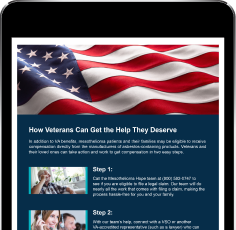About U.S. Amphibious Warships
The United States Navy is the world’s most technologically advanced and equipped naval force. The U.S. Navy employs over 325,000 personnel delegated to active service with another 107,000 held in the Navy reserves.
The Navy has over 430 commissioned military ships and hundreds more support craft. That includes 3,700 various jets, propeller planes, and helicopters. Many of these military fighting vessels are classed as amphibious warships.
Amphibious ships are a special design. Their purpose serves a bridge between open-water sea performance and delivering armed combat troops onto land.
Amphibious ships are called “gator freighters” because they’re as at-home by the land as they are in the water. Amphibious ships also serve to support civilian operations like disaster relief, humanitarian evacuations and delivering essentials like food, water, clothing, and fuel.
The Navy didn’t possess any amphibious ships before World War II. When it became obvious America would be involved in the sea and land-based military operations in Europe and the Far East, the U.S. Navy commenced a massive shipbuilding effort.
Many of these vessels were newly-designed amphibious ships that contained asbestos, a supposedly safe material that actually causes life-threatening diseases.
These multi-role warships evolved with the times and requirements. Many amphibious warships served as light aircraft carriers as well as landing craft. By the Korean and Vietnam wars, amphibious ships hosted helicopter attack squadrons as well as vertical take-off Harrier jump-jets.
These are the amphibious warship classes used by the U.S. Navy:
- Wasp Class (LHD): Landing Helicopter Dock ships.
- Tarawa Class (LHA): Landing Helicopter Attack ships.
- San Antonio Class (LPD): Landing Platform Docks.
- Aircraft Support (LSD): Landing Support Dick ships.
- Amphibious Command (LCC): Logistics, Communications and Coordinating ships.
The most advanced amphibious warships in the Navy are the American class vessels. The USS Tripoli is an all-out attack ship housing the Marines F-35 Joint Strike Fighter. It’s huge with a crew of 1,200 and capable of deploying 1,800 ground troops.
Asbestos Use in Navy Amphibious Warships
Navy architects and shipbuilders loved asbestos and specified it everywhere they could in amphibious warships.
Primarily, asbestos was used in Navy ships because it wouldn’t burn. Fire was a constant threat in vessels filled with flammable fuel and under bombardment.
Asbestos was also great insulation and sound-deadening material. ACM wouldn’t rust, which was a bonus in saltwater, and it was excellent electrical coating from being non-conductive.
Asbestos strengthened other products, lightened their weight and wouldn’t chemically react. Navy procurers liked asbestos because it was cheap, easy to find and simple to use.
What these Navy designers and administrators didn’t know was how dangerous airborne asbestos fibers could be to their veterans’ long-term health.
Navy veterans from the asbestos period have the highest rate of developing mesothelioma than any other group.
Many Navy vets worked for years on end in asbestos-laden environments. Sadly, they didn’t know the risk until 10 to 50 years later when mesothelioma and other asbestos-related diseases struck them.
Types Asbestos Products Used in Amphibious Warships
Over 300 different asbestos-containing products were used in building amphibious warships.
The most common Navy vessel products were:
- All insulation materials, including spray-on, loose-fill, rigid, block and wrapping
- Boiler room protection like blankets and fire shields
- Cement powder and mortar mixes
- Deck tiles and ceiling panels
- Electrical cable coatings and panel liners
- Pipe and fuel line covers
- Valves, packings, gaskets, and seals
- Welding rods and protective equipment
These shipbuilding components were utilized across the Navy, and every piece presented health risks to those vets anywhere near asbestos.
High Asbestos-Risk Occupations on Amphibious Warships
Every Navy veteran who worked on or around an amphibious warship built with ACM was at risk of developing mesothelioma or other asbestos-related diseases.
The risk degree for each worker depended on the length of exposure time, the quantity of airborne particles, and the specific asbestos type. United States Navy veterans who served on these older amphibious warships had a high likelihood of developing mesothelioma. Some advancement has been made in controlling mesothelioma. However, most veterans look for financial help and healthcare benefits that improve their quality of life. The Department of Veterans Affairs (VA) assists Navy veterans with mesothelioma by providing pension assistance and offering a number of healthcare benefits. Veterans also have other ways to receive compensation that won’t affect their VA benefits. For example, veterans can work with mesothelioma attorneys to negotiate compensation settlements and access asbestos trust funds. Our team can help you learn more about compensation in the wake of a mesothelioma diagnosis. Get our free mesothelioma guide today.Navy jobs with high asbestos exposure risk included:



